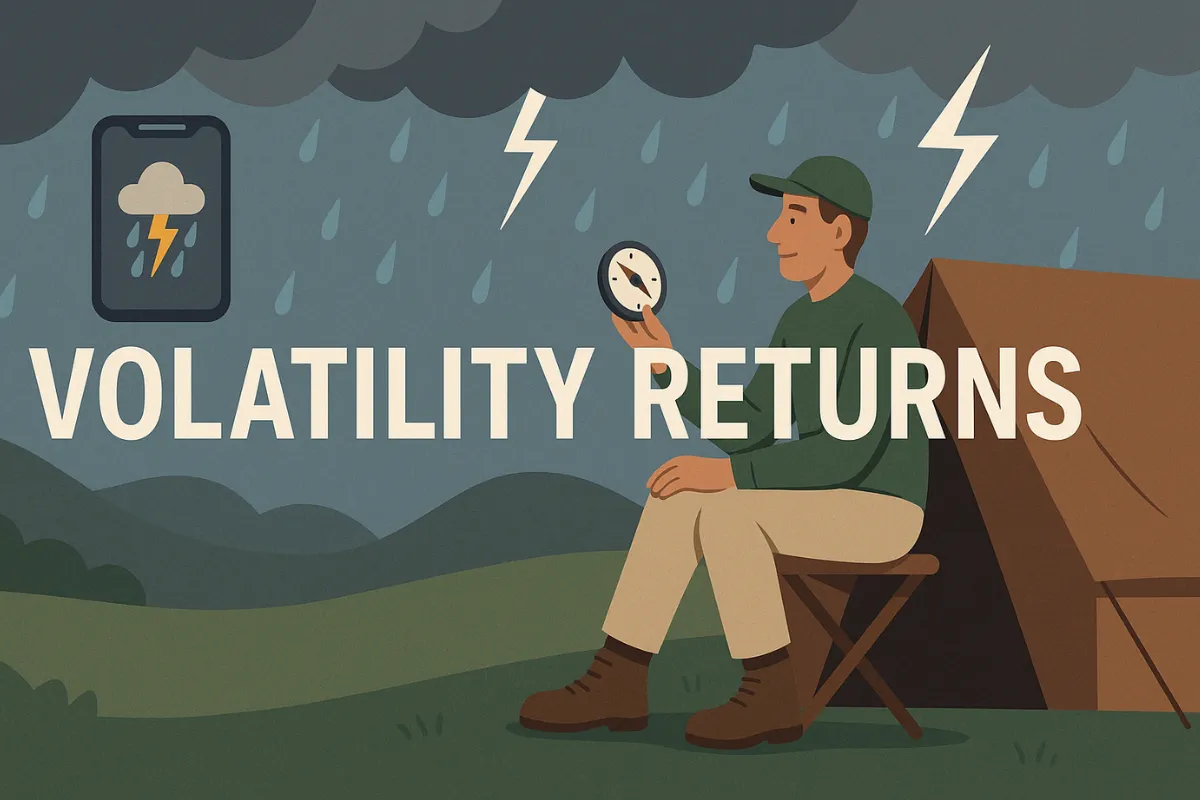BLOG

Volatility Returns: A Historical Look and What It Means Now
“The VIX gets clicks.” It’s an old saying in the financial media world, dating back to when publications first started selling display ads online. The VIX–better known as the “fear index”-- is what most investors watch to gauge market anxiety. When it rises, so does the expectation that stocks may fall in the short term. And right now, that’s exactly where we are. The VIX has seen spikes recently that we haven’t felt since the early days of COVID-19 and remains elevated relative to its long-term average – just take a look at the chart below.

As for the clicks? Well, that’s why we’re here in the first place. Investors everywhere are anxious to understand where the market is heading next, what the President’s next move will be, and how the markets will react. Some are overly optimistic about the future, while others are strongly pessimistic. The truth is that no one knows what tomorrow may bring, let alone the distant future, but we do have a lot of history to look back on to provide much-needed context and clarity, and that’s what I hope to accomplish with this market update. Let’s first set the table by addressing where we are today. The chart below shows the major asset classes performance so far in 2025, with the S&P 500 down just over 8% from the beginning of the year.

Today, we’re tackling two key questions:
Is the current market selloff normal when compared to past cycles?
What should investors do – and avoid – during periods like this?
To answer these, I’ve pulled together a handful of charts to help visualize the bigger picture. Let’s dive in.
If I was stranded on an island of lost investors and was only able to bring one chart along, it might be the one below. It shows that market volatility in stocks is an occurrence that happens in almost every year in a painful way. From 1990 to 2024, the S&P 500 delivered an impressive average annual return of 10.5%. But those gains didn’t come without turbulence, investors weathered an average intra-year drawdown of -14.1% along the way. It’s a clear reminder: long-term growth in the market has historically come with a fair share of short-term volatility.

While to a less painful degree, it’s almost the same story with the bond market as well. Take a look at the chart below.

The chart below illustrates the frequency of S&P 500 drawdowns by size since 1950, highlighting that market volatility is a normal part of the investing journey. While the index has delivered strong long-term returns, it has also experienced 71 pullbacks of 5% or more, 26 of 10%, and 11 of 20%. Even deeper drawdowns – 30%, 40%, and 50% – have occurred, albeit less frequently. The message is clear: volatility isn’t an anomaly, it’s the cost of admission. Successful investing requires the ability to navigate these downturns without losing sight of the bigger picture.

While the current political climate and market environment is entirely unique to today, the market behavior is not something that the market has not seen before. In fact, it’s much more common than most people realize. It’s so common in fact that we have a lot of great data on how to best invest during times of volatility.
The chart below shows how the 25 best and worst days in the S&P 500 since 1990 tend to cluster around the same periods–typically during times of heightened volatility. These sharp up and down swings often happen within days of each other, making it nearly impossible to catch the market’s best days without also experiencing some of the worst.

Missing just a handful of the market’s best days can crush long-term returns. Staying fully invested nets an 8.0% annual return–but miss the top 10 days each year, and that drops to -12.4%. The takeaway? Time in the market beats trying to time it. Just take a look at the chart below.

So far, we’ve seen that market volatility, while uncomfortable, is nothing new. It’s part of the game. And while the instinct to move to cash during a downturn is understandable, history shows it’s rarely the right move.
What Does This Mean to Me?
The data is clear: market pullbacks are frequent, short-term swings are sharp, and the biggest gains often come when things feel the most uncertain. Trying to time your way around the turbulence usually does more harm than good.
This is why staying invested, staying diversified, and staying focused on your goals, not headlines, is what matters most.
It’s easy to get swept up in the noise. But history has shown that patient investors, with a plan and a long-term perspective, have been rewarded.
So when volatility spikes and the “fear index” grabs headlines, remember: the market has seen this movie before. And every time, the story eventually moves forward.
Stay the course. Stay invested. Stay focused.
Have questions or want to talk through your strategy?
Or, if you know someone who might find this helpful, feel free to forward this email their way.
CONTACT
Check the background of your financial professional on FINRA's BrokerCheck.
The content is developed from sources believed to be providing accurate information. The information in this material is not intended as tax or legal advice. Please consult legal or tax professionals for specific information regarding your individual situation. The opinions expressed and material provided are for general information, and should not be considered a solicitation for the purchase or sale of any security.
We take protecting your data and privacy very seriously. As of January 1, 2020 the California Consumer Privacy Act (CCPA) suggests the following link as an extra measure to safeguard your data: Do not sell my personal information.
The information on this website is the opinion of Up Capital Management and does not constitute investment advice or an offer to invest or to provide management services. Before purchasing any investment, a prospective investor should consult with its own investment, accounting, legal, and tax advisers to evaluate independently the risks, consequences, and suitability of any investment.
Copyright 2024 | Privacy Policy | Terms & Conditions

